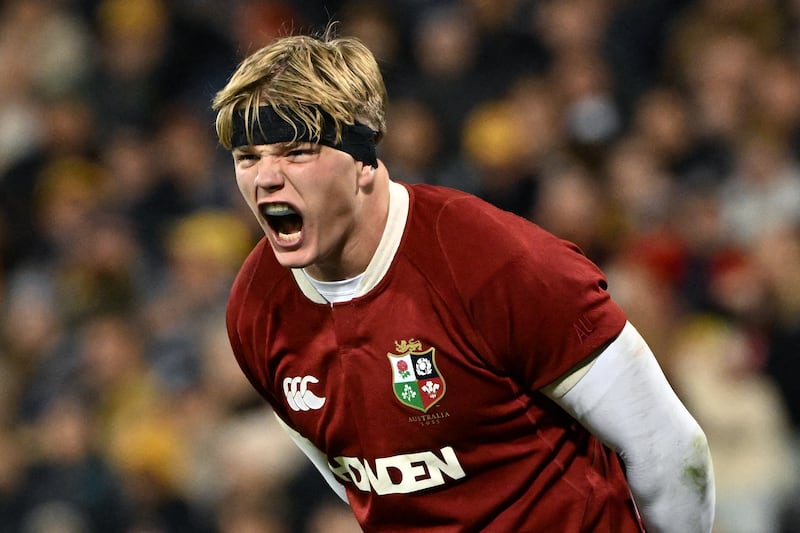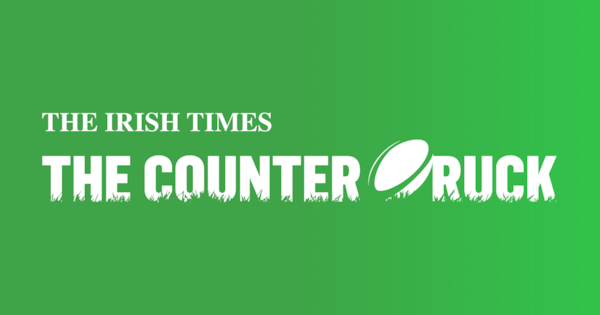Before Saturday’s match in Adelaide, the only other occasion that Australian and New Zealand players have combined to form a team against the Lions was in 1989.
Those players remember it as a spiteful occasion with lots of sledging, fighting, cheap shots and an obvious deep disdain between the groups.
The Lions were also involved.
The theory behind why there has never been another combined New Zealand/Australian XV in the following 36 years was that the players in the original team detested each other so much that the entire concept was abandoned.
READ MORE
That 1989 team was named The Anzacs. It is a word that is held sacred in both New Zealand and Australia as it was the acronym for the combined armies that the two nations sent to the first World War. The Anzacs suffered unimaginable losses in the carnage of Gallipoli and the western front. Yet the courage they displayed, which was beyond human imagination, continues to inspire the generations in both countries today.
You will notice that this week’s combined team of New Zealanders and Australians does not carry that sacred name.
The Lions will face the Aunz Invitational XV.
While the mob of 1989 produced an iconic encounter, with the Lions prevailing 19-15, it is fair to say that in the week leading up to the game the Anzac spirit was not on display.
This match will be played in Adelaide, the City of Churches. The Aunz XV will need to get down on their knees and pray for divine intervention because this edition of the combined southern nations does not contain anywhere near the same talent as the 1989 team.
It will also be the Lions’ last opportunity to find a solution to their own self-inflicted problems.
The original selection of four openside flankers in Josh van der Flier, Tom Curry, Jac Morgan and Henry Pollock has come back to haunt Andy Farrell. Since the opening day of this tour they have struggled to find a quality blindside flanker.

Leading into the Brumbies game, Pollock had not won a single lineout, and across all of this season’s Champions Cup campaign with Northampton he secured just five lineout catches. Hardly the stats of a lineout guru.
We only have to look back to England’s opening game of this year’s Six Nations in Dublin, when both Ben and Tom Curry, who are openside flankers, were selected. While they played with great skill and courage, the English lineout was negatively impacted. Ireland dominated the tail and launched attacking opportunities that powered an Irish victory.
Tadhg Beirne and Ollie Chessum have both played the overwhelming majority of this season as second rows. The Lions have experimented with both at six. As blindside flankers, Beirne and Chessum have been two metres late to the breakdown.
The Waratahs third XV won four turnovers at the tackle, compared with a solitary Lions steal. Against the Brumbies and the Waratahs, the Lions back row has not dominated the breakdown. It shows the selection of Pollock may have been politically correct but tactically wrong.
I have the greatest respect for Owen Farrell. He is a warrior, a leader and has been an exceptional player for the Lions and England for more than a decade.
Last Saturday at the Sydney Football Stadium, as a weak Waratahs team put in an inspiring defensive display, Farrell, in his new Lions tracksuit, was pictured on the stadium’s big screen.
There was a large section of the Lions contingent who loudly booed when he appeared. This is the same appalling, ignorant behaviour that English supporters inflicted on Farrell during the last World Cup in France.
While this bullying is totally against every principle in our game, wrongly or rightly Owen’s selection by his father has left both Farrells open to criticism.
When a fullback gets injured and is replaced by an outhalf, who is the coach’s son, the haters get their opportunity.
However, there is a compelling argument as to why Andy Farrell has called Owen into the squad.
The foundation of the Lions dominance on this tour has been their scrum. The horrible laws that punish technical scrum infringements with penalties has provided the Lions with a powerful platform.
If the Lions select a 6-2 bench in the Test matches – which I believe they will, aiming to obliterate the Wallabies scrum as they did to the Waratahs and the Brumbies – then Owen Farrell becomes the perfect multi-position reserve back. Owen is a world-class goal kicker, outhalf, ball distributing inside centre and is capable of playing fullback.
Unlike Marcus Smith, Farrell is a punishing defender who does not miss tackles.
Perhaps all of this talk of flanker weakness and 6-2 benches is academic. After the Wallabies disturbingly poor performance against a very unlucky Fiji, they do not appear capable of exploiting any Lions faults.
The series-ending injury to Noah Lolesio has exposed the giant problem in Australian rugby that I have been talking about for more than a decade. The lack of talented Australia outhalves is unimaginable. The players who are being considered to wear the Wallaby 10 jersey against the Lions would not get a start in any of the Irish provinces.
The only bright spot in an otherwise gloomy few weeks for the Wallabies was that both the Waratahs and Brumbies proved what we already know. Defence wins big matches and both teams tackled their hearts out and pushed the Lions.
Joe Schmidt may be forced to consider abandoning any thoughts of running rugby and select a 7-1 bench. Kick high. Chase hard. Smash anything wearing red. Take your penalty shots at goal or maul. Rinse and repeat.
The Wallabies can select two complete packs to imitate Springboks rugby.
It would be an abomination to the Australian rugby public, but it may be the only path for the Wallabies to have any chance of victory.















